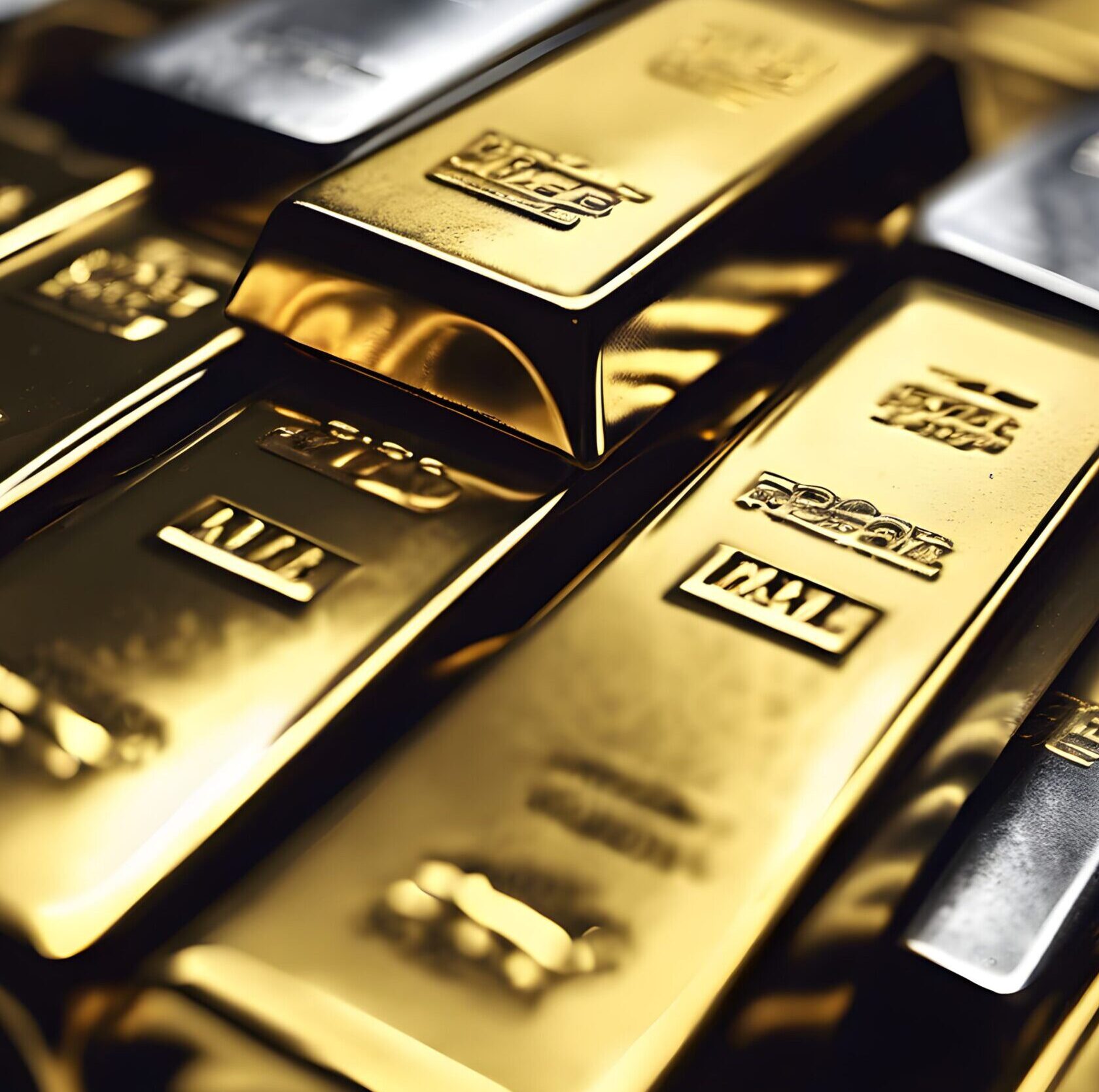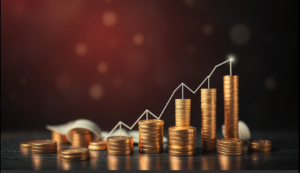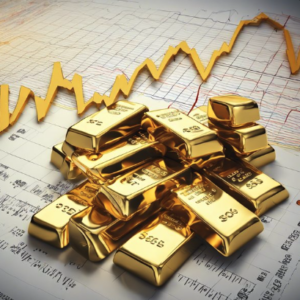
As 2024 draws to a close, both Gold (XAU) and Silver (XAG) are facing significant challenges, primarily due to the uncertainty surrounding the Federal Reserve’s (Fed) future policy decisions. The precious metals market is traditionally seen as a safe haven during times of economic or geopolitical instability. However, in December 2024, both Gold and Silver have been under pressure, unable to rally despite ongoing global risks. The key driver of this market stagnation is the lack of clarity regarding the Fed’s stance on interest rates.
Precious metals tend to perform better when interest rates are low because they offer no yield, making them an attractive alternative to interest-bearing assets. Conversely, when the Fed raises rates, as it has done aggressively in 2023 and 2024, Gold and Silver face headwinds. This article delves into the factors impacting the precious metals market, explains the role of Federal Reserve policy, and provides an in-depth analysis of the short-term and long-term outlook for Gold and Silver as of mid-December 2024.
Current Market Overview (Gold & Silver Prices)
Gold (XAU) Performance:
Gold, often considered the ultimate hedge against economic instability and inflation, has been trading in a relatively narrow range during December 2024. As of mid-December, Gold prices have fluctuated between $1,930 and $1,960 per ounce. This range-bound movement indicates a market in indecision, as investors await further clarity on the Fed’s policy direction.
Despite the ongoing concerns about inflation, geopolitical tensions, and economic slowdowns globally, Gold’s price has struggled to maintain a strong upward momentum. Typically, a period of economic or political instability would prompt a surge in Gold prices, but the strengthening U.S. dollar, fueled by the Fed’s hawkish rhetoric, is capping Gold’s potential rally. The U.S. dollar has been supported by the Fed’s aggressive interest rate hikes, which have made the Greenback more attractive, discouraging investment in non-yielding assets like Gold.
Additionally, the market’s focus on inflationary data has created a tug-of-war between Gold’s role as an inflation hedge and the Fed’s efforts to bring inflation under control through tighter monetary policy. Even as inflation moderates, core inflation remains stubbornly high, which keeps the market in suspense. Investors are looking for signs that the Fed might shift its stance before committing to any substantial Gold position.
Silver (XAG) Performance:
Silver has had a similarly difficult time in December 2024. Prices have remained between $23.50 and $24.00 per ounce, reflecting a lack of strong momentum. Silver is unique in that it serves a dual role as both a precious and industrial metal. While Gold’s price movements are largely driven by monetary policy and inflationary concerns, Silver’s price is more directly influenced by industrial demand. This makes Silver more susceptible to global economic trends.
The current global economic slowdown, particularly in China, has been a drag on Silver prices. Silver is heavily used in industries such as electronics, solar panels, and electric vehicles, making it highly sensitive to global industrial activity. As China’s economy has slowed, so has demand for Silver, which in turn has weighed on its price performance.
Moreover, Silver has been hit by the same headwinds as Gold due to the strength of the U.S. dollar and rising interest rates. While Silver has a history of outperforming Gold in bull markets, it has not yet found the necessary catalyst to break out of its current range. The broader economic environment, including inflationary concerns and geopolitical risks, is not sufficient to drive Silver higher on its own without additional industrial demand.
The Role of Federal Reserve Policy in Gold and Silver Prices
Federal Reserve policy plays a critical role in determining the performance of Gold and Silver. This relationship stems from the impact that interest rates have on the relative attractiveness of precious metals versus interest-bearing assets like bonds or savings accounts. When interest rates rise, the opportunity cost of holding non-interest-bearing assets like Gold and Silver increases, leading to lower demand for these metals.
The Fed’s Recent Actions:
Over the past year, the Federal Reserve has raised interest rates multiple times in an attempt to combat persistent inflation. The Federal Funds Rate has risen to levels not seen in decades, with the current range between 5.25% and 5.50%. The aggressive tightening cycle has been a key factor in the strong performance of the U.S. dollar, which, in turn, has put downward pressure on Gold and Silver.
In its latest Federal Open Market Committee (FOMC) meeting in December, the Fed kept its hawkish stance, suggesting that the central bank may not ease up on rate hikes in the near term. This has created a sense of uncertainty in the markets, with investors wondering whether the Fed will continue to raise rates in 2025 or begin to slow down. While inflation has shown signs of moderation, core inflation remains above the Fed’s target, and the central bank is not yet ready to shift its policy.
This policy uncertainty has caused both Gold and Silver prices to remain stagnant. Typically, when the Fed signals a slower pace of rate hikes, Gold and Silver can rally, as lower rates make non-yielding assets more attractive. However, with the Fed’s aggressive actions and no clear indication of a dovish pivot, the precious metals market remains in a holding pattern.
The Inverse Relationship Between Fed Rates and Precious Metals:
The relationship between interest rates and the price of precious metals is well established. When the Fed raises interest rates, it strengthens the U.S. dollar, which makes Gold and Silver less attractive to foreign investors. Additionally, higher rates make other investments, such as bonds, more appealing relative to Gold and Silver, which do not offer interest or dividends. This results in lower demand for the metals, causing prices to fall.
Conversely, when the Fed cuts rates or signals a dovish stance, the U.S. dollar weakens, and Gold and Silver become more attractive. This is why the market is waiting for signals that the Fed may slow down its rate hikes or even begin to ease policy. However, until such a shift occurs, precious metals are likely to remain under pressure.
Global Economic and Geopolitical Factors
In addition to Federal Reserve policy, global economic and geopolitical factors are also playing a significant role in the performance of Gold and Silver.
Inflation Trends:
Inflation remains a major concern for investors, despite recent signs of moderation. The U.S. consumer price index (CPI) has shown a decline from its peak, but core inflation—excluding volatile food and energy prices—continues to be stubbornly high. This has kept investors cautious, as high inflation erodes the purchasing power of fiat currencies and pushes investors toward assets like Gold that are seen as a store of value.
If inflation remains elevated or picks up again in 2025, Gold could see renewed interest as an inflation hedge. However, the Fed’s tight monetary policy remains a counterbalance to this, as higher interest rates can help keep inflation in check. Therefore, Gold’s performance will likely depend on the trajectory of inflation and how the Fed responds.
Geopolitical Tensions:
Geopolitical risks continue to support Gold as a safe-haven asset. Tensions in Eastern Europe, the Middle East, and other regions have created a volatile global landscape. In particular, the war in Ukraine and ongoing tensions in the Middle East have kept investors on edge. Gold typically benefits from such uncertainties, as it is seen as a store of value in times of crisis.
However, the strength of the U.S. dollar has limited the extent of Gold’s gains. When the U.S. dollar is strong, Gold’s price tends to be muted, as investors prefer the safety of the dollar over Gold’s uncertain price movements. Despite this, if geopolitical tensions continue to rise, Gold could see a flight-to-safety rally if investor sentiment turns more risk-averse.
Economic Slowdown in Key Markets:
Global economic growth is showing signs of slowing, particularly in key markets such as China and the European Union. The economic deceleration in China, the world’s second-largest economy and a major consumer of industrial metals like Silver, has weighed on Silver prices. Weak demand for Silver from industrial sectors, combined with the strong U.S. dollar and the Fed’s interest rate hikes, has created a challenging environment for Silver.
If global growth continues to slow, both Gold and Silver could benefit as safe-haven assets. However, the lack of industrial demand for Silver could limit its upside, especially if economic conditions in major markets like China do not improve.
Gold (XAU) Price Forecast:
Looking ahead, Gold faces a difficult road as it grapples with the Fed’s tight monetary policy and uncertain inflation dynamics. In the short term, Gold is expected to remain range-bound, with support around $1,920 and resistance near $1,960. Any move above this resistance level could signal a potential push toward $2,000 per ounce, especially if inflation fears resurface or geopolitical tensions escalate.
Support Levels:
- $1,920: This level has served as a strong support zone for Gold, where the price has found buying interest during recent pullbacks.
Resistance Levels:
- $1,960: A key resistance level that has capped Gold’s ability to advance. A sustained break above this could open the door for further gains, especially if the Fed signals a shift in its stance.
If the Fed pivots toward a more dovish policy stance in 2025, Gold could see a substantial rally, possibly pushing above $2,000 per ounce. However, this will depend on inflation data and broader economic conditions.
Silver (XAG) Price Forecast:
Silver is likely to remain under pressure in the near term due to its sensitivity to industrial demand and the strength of the U.S. dollar. However, geopolitical tensions and inflation risks could provide a floor for Silver prices, preventing a deeper decline.
Support Levels:
- $23.50: This level has provided support for Silver in recent weeks. If the price falls below this, it could trigger further weakness.
Resistance Levels:
- $24.00: This is the immediate resistance level that Silver has struggled to break. A sustained move above this level could suggest a potential rebound.
Long-term, Silver could benefit if the global economy stabilizes and industrial demand for Silver picks up. However, in the short term, Silver may remain range-bound, mirroring Gold’s price action.
As of mid-December 2024, Gold and Silver prices are caught in a holding pattern, driven primarily by the uncertainty surrounding Federal Reserve policy. The market is waiting for clarity on whether the Fed will slow its pace of rate hikes or potentially shift toward a more dovish stance. This uncertainty, coupled with inflationary pressures and global economic risks, means that both Gold and Silver are likely to experience volatility in the short term.
While both metals face challenges due to a strong U.S. dollar and rising interest rates, their role as safe-haven assets in times of economic or geopolitical instability remains a crucial factor. Investors will need to stay attuned to developments in the Fed’s monetary policy, inflation trends, and global economic conditions to make informed decisions about Gold and Silver investments moving forward.
Visit our other website: https://synergypublish.com


